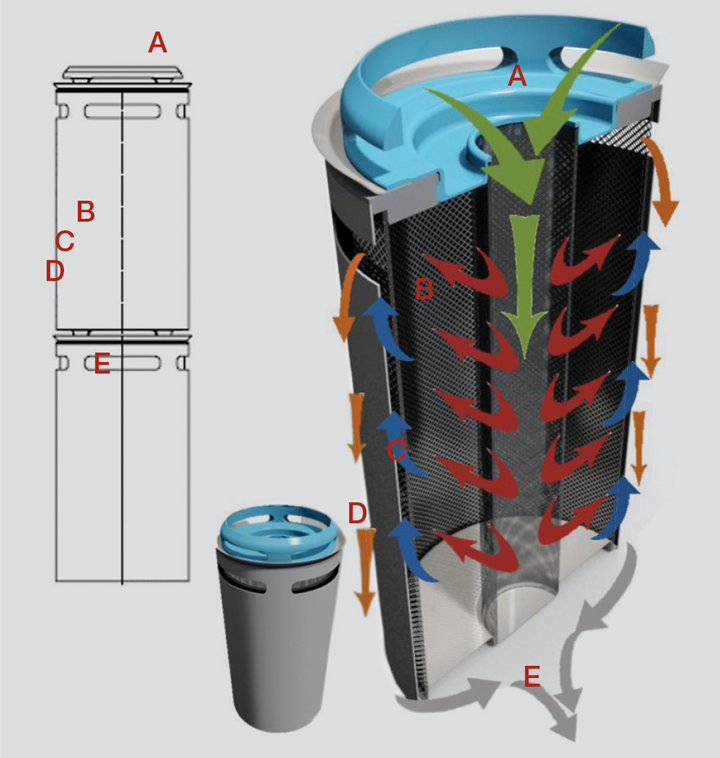Johnson Matthey and bp license process to make jet fuel from farm waste at US$4bn plant
JOHNSON MATTHEY (JM) and bp have licensed their Fischer-Tropsch process to a huge new US$4bn US plant that will turn agricultural waste into sustainable aviation fuel (SAF).
DG Fuels plans to build the plant in St James Parish, Louisiana where it will produce 600,000 t/y of SAF using the FT CANS process technology that JM and bp co-developed. The partners say the plant will be the largest deployment of its technology, seven times larger than any previous project.
Each year, DG Fuels expects to buy US$120m of sugar cane waste, with a third supplied by local farmers, to feed the plant. The fixed-bed Fischer-Tropsch process converts synthesis gas produced from this waste biomass into synthetic crude oil which in turn is processed into kerosene.
Michael Darcy, CEO of DG Fuels, said: “This innovation will take DG Fuels’ SAF from the sugar cane fields of Louisiana to cleaner skies all across the world.”
Fischer-Tropsch development
The Fischer-Tropsch process was originally developed by Franz Fischer and Hans Tropsch in 1925. Development of the technology that will be used at the DG Fuels plant can trace its roots back to the 1980s when bp began a dedicated Fischer-Tropsch R&D programme. In the 1990s it joined forces with JM to push the technology further and in 2002 they built the Nikiski demonstration plant in Alaska using conventional tubular reactor technology to convert pipeline natural gas into synthetic crude.
To apply the technology to smaller scale applications using waste biomass, the team set about lowering costs and improving efficiency. It resulted in a novel catalyst carrier. These cannisters are stacked inside a reactor tube to effectively create mini-adiabatic radial flow reactors with intercooling.
This radial flow allows the use of smaller catalyst particles which improves selectivity. Taken altogether, the technology results in a three-fold increase in productivity, a 95% reduction in tube numbers, and halves capital costs. Because the catalysis is held inside a cannister, it doesn’t have to be filtered from the product. The catalyst-containing cannister is simply removed, making it easier to recover and eliminating any interaction with the hazardous cobalt catalyst.
The technology was awarded the Research Project Award and the Oil and Gas Award by IChemE in 2017.

Noemie Turner, vice-president of technology development and commercialisation at bp, said: “The aviation industry is looking to greatly increase its use of SAF, and we’re proud that DG Fuels has selected our technology to be at the heart of their ambitious plans for large-scale SAF production. Our FT CANS technology solution brings together decades of science and engineering expertise from bp and JM, and this project shows its competitiveness across the range of production scales and feedstock sources the industry needs.”
Use in jet fuel
Fischer-Tropsch is one of seven process routes that are permitted to produce sustainable aviation fuel. Under fuel certification rules, Fischer-Tropsch kerosene can be blended to a maximum of 50% with conventional kerosene from fossil feedstocks to create drop-in fuel. It’s estimated that after blending, the plant will produce enough fuel each year for more than 30,000 transatlantic flights, equivalent to 3% of traffic flying those routes today.
DG Fuels expects the plant to start production in 2028 and has already secured deals to sell the SAF to Air France-KLM and Delta Air Lines.
The output of the new plant would exceed the entire global production of SAF last year, which the International Air Transport Association (IATA) puts at 500,000 t. This figure was double the volume produced in 2022. This year production is expected to reach 1.5m t, equivalent to 0.5% of aviation fuel demand. IATA has called for governments to do more to help scale up SAF production in order for the industry to be net zero by 2050.
Maurits van Tol, chief executive for catalyst technologies at JM, said: “The size of this project is truly exciting and would help take the industry closer to wide-scale use of SAF.”
Recent Editions
Catch up on the latest news, views and jobs from The Chemical Engineer. Below are the four latest issues. View a wider selection of the archive from within the Magazine section of this site.




